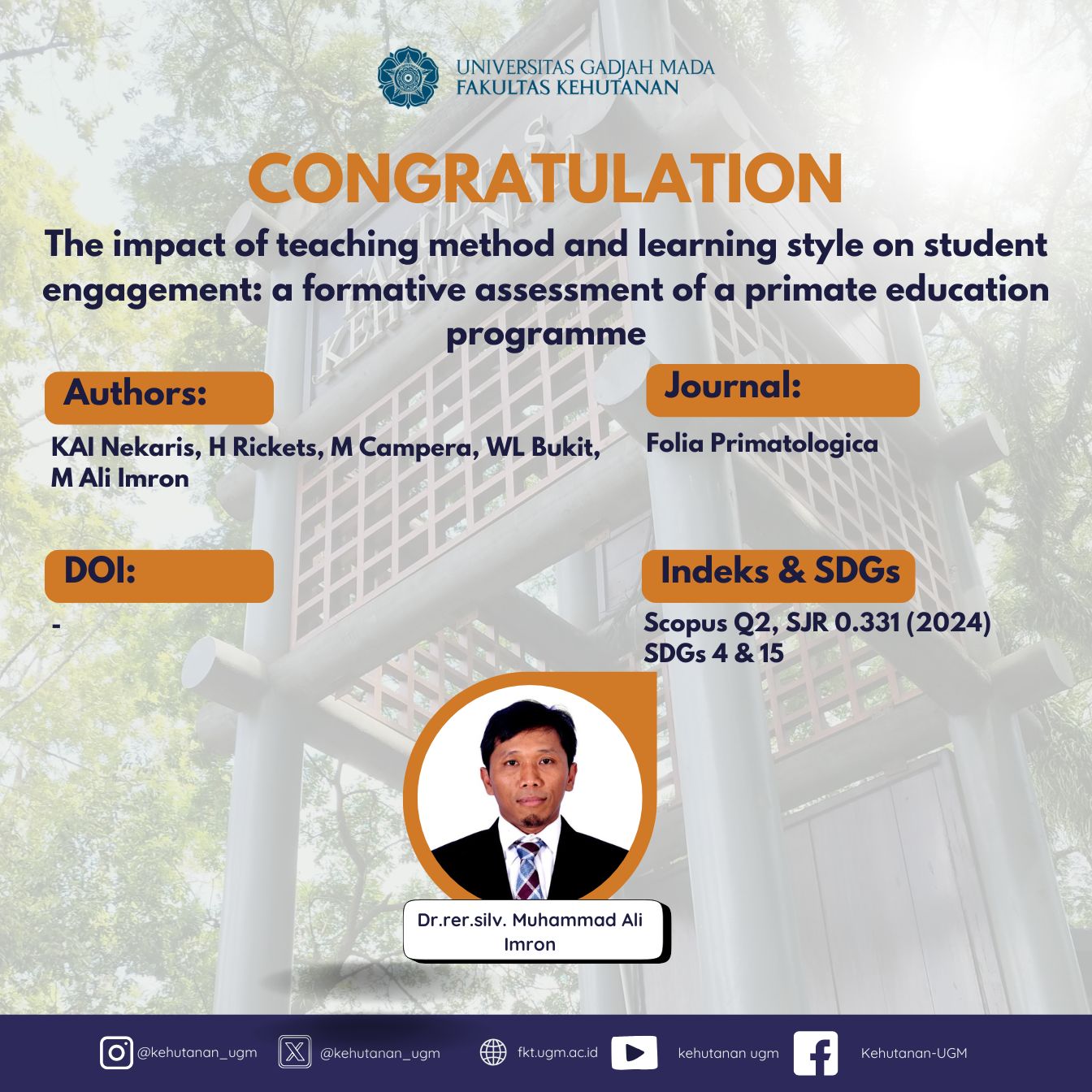
Abstract
We explore the impact of teaching methods and learning styles on student engagement in a conservation education program focused on primate conservation in Indonesia. Engaging students is essential for fostering environmental literacy and encouraging pro-environmental behaviours. We assessed the effectiveness of active versus didactic teaching methods and visual, auditory, and kinaesthetic learning styles in enhancing engagement. Using a formative assessment approach, we observed student participation and attentiveness across 19 different activities in a Nature Club program. Our results indicated that active teaching methods significantly increased engagement, while auditory learning styles were associated with lower levels of engagement. The findings emphasise the importance of adopting active learning strategies and tailoring activities to accommodate diverse learning styles to maximise student involvement. This research contributes valuable insights into the design of conservation education programs that effectively promote long-term environmental stewardship among young learners. Furthermore, this method can easily be adapted to evaluate a range of different conservation education programmes.
SDGs:
SDG 4: Quality Education
SDG 15: Life on Land
Link Dokumen:
Download
